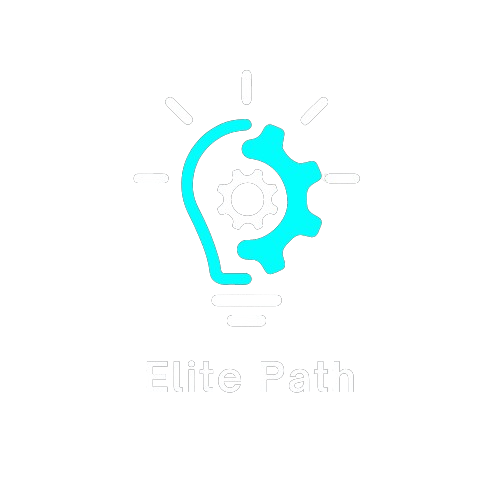Understanding Inbound Closing
What is inbound closing, and why has it become a cornerstone of modern sales strategies? Inbound closing is the process of converting inbound leads—people who have already expressed interest in your product or service—into paying customers. Unlike outbound sales, where salespeople actively reach out to potential clients, inbound closing focuses on engaging prospects who have taken the first step themselves. This approach relies heavily on understanding the needs and pain points of potential clients, making it a more consultative and personalized method of selling. Inbound closers act as guides, helping prospects navigate their options and ultimately choose the best solution for their needs. Businesses are increasingly adopting inbound closing because it leads to higher conversion rates, improved customer satisfaction, and stronger relationships with clients. By focusing on warm leads rather than cold prospects, inbound closers reduce wasted effort and create a smoother, more effective sales process.
The Inbound Closing Process
The inbound closing process begins with identifying which leads are most qualified to buy. Not all inquiries are ready to make a purchase immediately, so effective lead scoring and qualification methods are essential. Once the prospects are identified, building rapport and trust is the next critical step. Active listening and empathy help closers understand the client’s goals and challenges. Asking thoughtful questions uncovers the prospect’s needs, allowing the closer to tailor solutions effectively. Presenting your product or service as the best-fit solution requires a balance of persuasion and honesty, ensuring the prospect feels confident in their decision. Handling objections with value-focused responses is a skill every inbound closer must master. Ultimately, the deal is closed not through pressure, but through guidance, understanding, and demonstrating the tangible benefits of the solution.
Key Skills of an Effective Inbound Closer
Being a successful inbound closer requires a specific set of skills that go beyond basic sales techniques. Active listening ensures that the closer truly understands the prospect’s needs rather than just delivering a scripted pitch. Emotional intelligence allows closers to read verbal and non-verbal cues, adapting their approach to suit each conversation. Time management and follow-up strategies help keep leads engaged without feeling overwhelmed. Product knowledge is essential for offering solutions that genuinely meet client needs. A consultative approach, rather than a hard-sell mentality, builds trust and credibility with prospects. Effective inbound closers also possess strong communication skills, able to articulate the value of a product or service clearly. Finally, persistence combined with patience ensures that even hesitant prospects receive the attention they need to make informed decisions.
Tools and Technologies Supporting Inbound Closing
Technology plays a significant role in optimizing inbound closing efforts. Customer Relationship Management (CRM) systems track inbound leads, allowing closers to follow up at the right time and with the right message. Automation tools streamline repetitive tasks such as scheduling meetings, sending reminders, and tracking engagement metrics. AI-driven analytics help prioritize leads based on their likelihood to convert, saving time and increasing efficiency. Communication platforms like email, phone, and video calls enable personalized interactions, even at scale. Sales enablement tools provide resources such as product sheets, demos, and templates that enhance the sales conversation. Integrating these tools creates a seamless workflow that ensures no lead falls through the cracks. Technology doesn’t replace the personal touch of inbound closing but amplifies its effectiveness by making processes smoother and more organized.
Benefits of Implementing Inbound Closing in Business
Adopting inbound closing offers multiple advantages for any business looking to boost revenue and improve customer experience. Focusing on warm leads increases the likelihood of conversion, resulting in more closed deals in less time. Personalized engagement enhances customer satisfaction and encourages repeat business. The sales cycle becomes more streamlined because inbound leads are already interested and informed. Businesses experience higher efficiency, as resources are spent nurturing genuine opportunities rather than chasing cold prospects. Inbound closing also strengthens brand reputation by presenting the company as helpful and solution-oriented rather than pushy. Teams benefit from clearer sales metrics, enabling them to refine strategies and improve performance. Overall, inbound closing creates a win-win scenario: prospects receive guidance and solutions, while businesses enjoy improved revenue and loyalty.
Common Challenges in Inbound Closing
Despite its advantages, inbound closing comes with its own set of challenges. Handling a high volume of inbound leads can be overwhelming if the process isn’t organized effectively. Maintaining personalization for each prospect requires time, effort, and skill. Some prospects may be indecisive or unclear about their needs, requiring more patience and guidance. Avoiding generic or scripted pitches is essential to build trust and rapport. Closer teams must also remain consistent in messaging to ensure a uniform experience for all leads. Tracking performance metrics can be tricky without proper tools or processes. Recognizing and addressing these challenges ensures that inbound closing remains efficient, effective, and customer-focused.
Strategies to Improve Inbound Closing Performance
Enhancing inbound closing performance involves a combination of strategy, skill, and technology. Personalizing every interaction with prospects ensures they feel heard and valued. Leveraging social proof, such as testimonials and reviews, can provide credibility and reduce hesitation. Continuous training and coaching equip sales teams with updated techniques and industry knowledge. Tracking performance metrics like conversion rates, response times, and lead engagement helps identify areas for improvement. Clear communication and follow-up strategies prevent leads from becoming cold. Encouraging collaboration among sales, marketing, and customer support teams ensures prospects receive consistent messaging. By refining these strategies, businesses can maximize the potential of inbound leads and improve overall revenue.
Bullet List: Best Practices for Inbound Closing
- Qualify leads effectively using lead scoring techniques
- Build rapport and trust through active listening
- Use consultative selling rather than aggressive pitching
- Leverage CRM and automation tools to streamline processes
- Handle objections with empathy and value-focused responses
- Personalize every interaction based on the prospect’s needs
- Continuously monitor metrics and refine sales strategies
FAQ Section
What is inbound closing, and how does it work?
Inbound closing is the process of converting interested prospects into paying customers by guiding them through the sales journey with personalized, consultative techniques.
How is inbound closing different from outbound closing?
Outbound closing involves reaching out to cold prospects, while inbound closing focuses on warm leads who have already expressed interest in your product or service.
Can small businesses benefit from inbound closing?
Yes, small businesses can increase conversion rates and customer satisfaction by prioritizing inbound leads, which are more likely to result in sales.
What skills are necessary to become a successful inbound closer?
Key skills include active listening, emotional intelligence, consultative communication, time management, product knowledge, and objection handling.
How do inbound closers handle objections effectively?
Inbound closers address objections with empathy, provide solutions that align with prospect needs, and emphasize the value and benefits of the product or service.
Takeaway
Understanding what is inbound closing and implementing it effectively can transform the way a business engages with leads. By focusing on warm prospects, building trust, and providing value-driven solutions, inbound closing streamlines the sales process and increases revenue. Combining skilled closers with the right tools and strategies ensures that businesses can convert more leads while creating a positive experience for customers. Investing in inbound closing not only improves sales outcomes but also strengthens customer relationships, making it an essential approach in today’s competitive market.











